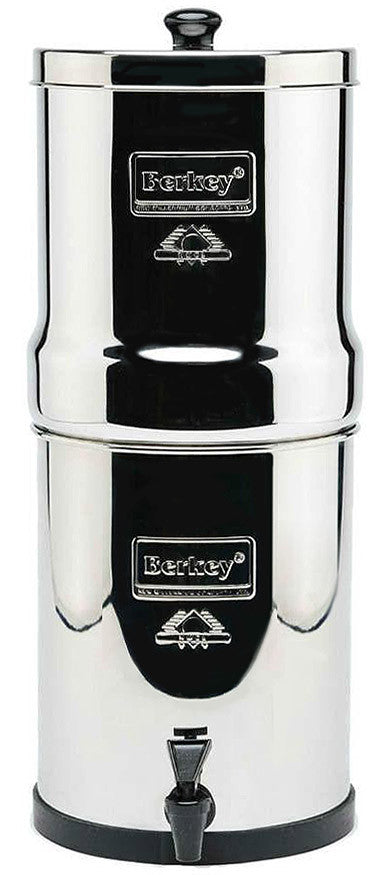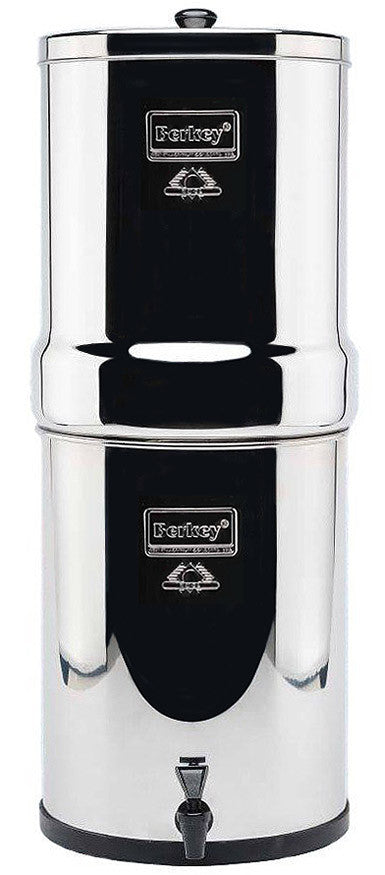
Copper is a metal that occurs naturally on Earth. It is a mineral found in soil and rocks and in the low levels of natural bodies of water.
Copper contains an essential element. Indeed, your body needs a small amount of copper to stay healthy. However, having too much is harmful.
Copper is used to make various products, such as plumbing systems. As such, it can corrode into drinking water as it passes through the plumbing system inside your home. If copper pipes corrode into the drinking water, it can soon affect the safety and quality of the water.
This article will discuss how copper enters drinking water, whether copper-containing drinking water is dangerous, and ways to prevent it from entering the water.
Background Information
All-natural water sources can have low copper levels. However, if drinking water has been left in household copper pipes for long periods, this can be the main cause of high copper levels.
Once again, copper can enter drinking water through the plumbing system whenever the pipes are corrosive. Corrosive water dissolves copper, which is found in plumbing parts.
Corrosion refers to the deterioration of substances or properties caused by their reaction with their environment. For various reasons, the metal in water pipes dissolves into the water. This can lead to pipe failure and corrosion of appliances, water heaters, and fixtures.
In plumbing systems, corrosion is caused by chemical and physical reactions between the pipe material and water.
Some signs that you have corrosive water include pinhole leaks, blue-green stains on the plumbing fixtures, and pitting in your pipes. If you have found these signs in your water, the presence of lead can also be a problem.
When there is a lot of dissolved copper in the water, it can taste or smell bad. Sometimes, it can also give it a blue color.
Common Causes of Copper Corrosion Problems
Some causes of copper corrosion problems include low pH levels, which refers to acidic water being less than 7.0. Another cause can be a high water level, which is alkaline water greater than 8.5.
Furthermore, high dissolved oxygen and salt levels or total dissolved solids in the water can cause corrosion problems.
Moreover, corrosion-causing bacteria such as iron bacteria and sulfate can cause corrosion—electrochemical causes like the improper grounding of electrical appliances to the copper piping. Or, when lightning strikes, the utility poles of the grounding wires can cause corrosion in the water.
The water's high velocity relative to the piping's size can cause corrosion, which in turn causes hydraulic wear. This can sometimes be found in circulating hot water systems using pumps.
Conversely, sediment, sand, or other grit in the water can also cause hydraulic wear and tear on the piping.
Finally, improper installation of copper piping leads to copper corrosion. The failure to properly deburr or ream the ends of the pipe and the use of excessive acid flux when soldering the pipes can be the causes.
Copper in Minnesota’s Water
Although, in general, the pH level of the groundwater in Minnesota is high enough to prevent water from dissolving copper, other factors contribute to corrosion. The public water system monitors how corrosive water reduces copper's risk and leads to getting into the drinking water.
In 1994, the Minnesota Pollution Control Agency found that none of Minnesota's 954 wells tested for copper had elevated copper levels exceeding the EPA standard.
Health Effects
The normal adult will require two to three milligrams of copper each day. Around 90% of your dietary needs for copper are provided by food. Drinking water can provide less than 10% of your daily copper intake.
The federal government must not increase the maximum copper level in drinking water. Higher copper levels can cause liver poisoning, especially in infants and children with genetic disorders.
Under the Safe Drinking Water Act, the Environmental Protection Agency (EPA) must establish the concentration of contaminants in public drinking water supplies. To prevent short-term gastrointestinal problems in consumers, the EPA set the level for copper in drinking water at 1.3 mg per liter.
However, states like Delaware and Nebraska have experienced difficulty in maintaining the copper levels within this goal.
Recent population studies have reported no adverse health effects when a high level of copper is ingested. As such, questions have been raised about the validity of the science on which the EPA has based its standard for drinking water. Some people believe that the goal is low.
Meanwhile, some believe their family might get sick from copper levels below the EPA's current standard.
Because of these concerns, Congress has asked the Research Council to independently review the technical and scientific basis of EPA’s standard for copper in drinking water.
The committee said that too much copper could lead to various health problems. If one has ingested excessive doses, it can cause diarrhea, vomiting, and nausea.
Long-term exposure can cause copper poisoning. This is true for people whose bodies have problems regulating copper because of illness or genetic disorders. One example can be Wilson’s disease.
Meanwhile, severe cases of copper exposure can cause liver poisoning, anemia, and kidney failure.
Wilson’s disease is caused by a gene defect essential to eliminating excess copper levels in the body. In the past years, people with Wilson’s disease were considered a small portion of the population.
Experts believe one way to protect them is to limit their copper intake. But new evidence suggests that the brothers and sisters of people with Wilson’s disease can be at risk, too. This is true even if they don’t have the disease themselves. As such, carriers, or those with at least one defective gene, can also be at risk.
Children who carry the gene are particularly at risk because they consume more water than adults in proportion to their size. Wilson’s disease affects only one out of 40,000 people in America.
However, the committee believes that 1% of the total population may carry the gene for the disease. No test is available today to identify individuals at risk of the disease.
How to Tell if the Copper Levels in the Drinking Water are Elevated
If the copper level in water is low, it usually leaves a green or blue stain in the hand basins, pipes, taps, toilets, or showers. However, this water is still safe to drink and has no metallic or bitter taste.
Meanwhile, a higher level of copper will leave an unpleasant or bitter taste in the water. This kind of water is not safe to drink. You must contact your drinking water provider or let a professional test it.
Getting Tested for Copper
You can be tested for copper. Your doctor can test your copper levels through urine and blood tests.
Moreover, hair analysis can be performed. However, this method has no scientific basis yet and does not provide an accurate diagnosis. Hair testing will not accurately measure copper poisoning.
Reducing Exposure to Copper
One cannot eliminate copper intake. However, you can avoid naturally high foods in fiber to reduce copper levels in the body. But before changing your diet, make sure that you talk to your doctor. This is because they are high in copper foods and are important components of a healthy diet.
How to Protect Yourself and Your Family from Copper in the Water
Indeed, if the copper level in the water is more than 1,300 micrograms per liter, it can be a health risk for everyone. Thus, here are some easy steps to try to help keep your drinking water safe:
First, identify the source and severity of the problem. Then, the piping system must be inspected, and the drinking water must be accurately analyzed.
If the water faucet has not been turned on for more than six hours, let it run for at least 30 to 60 seconds before using it.
Second, you can use cold water to make food, drink, or make food formulas. According to studies, hot water releases more copper from pipes than cold water.
Verify if unnecessary electrical appliances or wiring are connected to the piping. Check if the piping system is properly grounded to the earth. Check to ensure electrical continuity throughout the piping system.
For example, plastic water filters, softeners, or sections of plastic piper must not electrically separate the copper piping. Therefore, you must install jumper cables around these items.
Next, test your water. You can check hardness, pH level, alkalinity, temperature, and total dissolved solids. Calculate the Langelier Saturation Index to determine whether the water is aggressive or corrosive.
If you are still concerned about water quality and safety, arrange a laboratory test for tap water. Indeed, testing your water is important, especially if you have an infant or a family member with Wilson’s disease.
An accredited laboratory must do water testing. Contact the authorities for a sample container and instructions on submitting a sample. You can also ask your county if it has any programs for testing water quality.
If the tests show that the copper levels in your water are above 1,300 micrograms per liter, even after you let the water run for 30 to 60 seconds, you can consider treating your water.
Berkey Water Filter Systems

The Berkey water filter systems are gravity filters available in seven varieties, models, and sizes. They all use the same filters that have been proven to remove copper from drinking water. You can check out Berkey's product page here and invest in a product for your family.
For Private Wells
Copper is not found in the groundwater from your well. Copper can enter the drinking water whenever it travels through the plumbing system. If your plumbing system consists of copper-made parts, you can try some steps to regulate the copper level.
For Public Water Systems
The EPA has set a limit of 1,300 micrograms per liter for public water systems where people receive childcare, work, live, and attend school. These systems must take initiatives to reduce the amount of copper in the water.
This is true if more than 10% of the water samples from sampling sites and homes are served by the system and have copper levels of over 1,300 micrograms per liter.
You can find the level of copper in a community water system by reading the system’s Water Quality Report. This is also known as the Consumer Confidence Report. You can ask the community water system for this copy or find it online.
Please note that your home's drinking water may contain higher levels of copper than homes where the public water system has been tested. As such, follow the steps above to help keep your drinking water safe.
For non-community water systems that serve schools, factories, childcare facilities, and offices can contact the non-community systems. This can help you determine the level of copper as detected in the system.
Meanwhile, resorts, restaurants, and campgrounds are not required to test their water for copper.
Conclusion

In summary, copper is used in various products, especially water pipes. Over time, the pipes can corrode, putting your drinking water at risk of contamination.
Meanwhile, low levels of copper have no health effects on the body. It is needed to have good health. However, when copper exceeds 1,300 milligrams per liter, as required by EPA, it can cause adverse effects on the body. Further studies are needed to be done with different age groups.
Meanwhile, there are ways to minimize copper in drinking water. You can flush the water, have it tested, or invest in a gravity filter like the Berkey Water Filtration System. For peace of mind, it would be best to prioritize your family's health.
← Older Post Newer Post →





